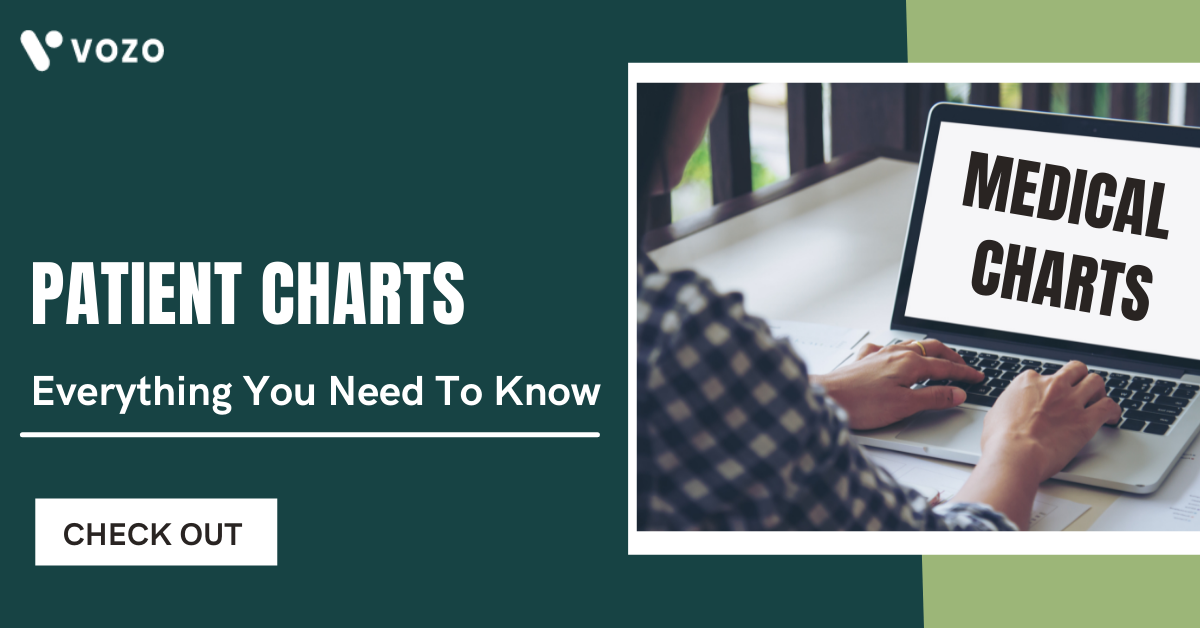Patient Charts: Everything You Need To Know
If you’re looking for a tool that can simplify complex data management, consider using a patient medical chart. The real purpose of medical charts is to serve both the medical record and a legal record of an individual patient’s clinical status. This article clearly explains to you all about patient charts.
What is a patient medical chart?
A patient medical chart, also known as a patient chart, is a complete medical record of a patient’s important medical information such as diagnosis, medications, treatment plans, allergies, lab test results, and more.
A patient chart holds medical notes made by doctors, lab technicians, nurses, or any other person of a patient’s healthcare team.
The growing importance of patient charts
Proper patient care involves addressing a patient’s symptoms in the context of the big picture. Patient charts are that big picture. The comprehensive patient data they provide gives you all the information you need to make proper diagnoses, prescribe appropriate medications, order appropriate blood work, and set up robust treatment plans. Without patient charts, even highly experienced doctors can misdiagnose patients or set up treatment plans that yield no results.
Additionally, medical billers and coders rely on the information in patients’ charts to generate medical claims. Claims are then submitted to payers like insurance companies for practices to collect the money they are owed for services rendered. Without a comprehensive medical chart, it is virtually impossible for medical billers to effectively do their job.
RELATED: Moving Towards The Future Of Patient Engagement
What information is included in the patient chart
- Surgical history (e.g., operation dates, operation reports, operation narratives)
- Obstetric history: (e.g., pregnancies, any complications, pregnancy outcomes)
- Medications and medical allergies
- Family History (e.g., immediate family member health status, cause of death, common family diseases)
- Social History (e.g., community support, close relationships, past and current occupation)
- Habits (e.g., smoking, alcohol consumption, exercise, diet, sexual history)
- Immunization Records (e.g., vaccinations, immunoglobulin test)
- Developmental History (e.g., growth chart, motor development, cognitive/intellectual development, social-emotional development, language development)
- Demographics (e.g., race, age, religion, occupation, contact information)
- Medical encounters (e.g., hospital admissions, specialist consultations, routine checkups)
During a medical encounter, medical charts will include any summations relevant to the patient’s care, including:
- Chief complaint
- History of the present illness
- Physical examination (e.g., vital signs, muscle power, organ system examinations)
- Assessment and plan (e.g., diagnosis, treatment).
- Orders and prescriptions
- Progress notes
- Test results (e.g., imaging results, pathology results, specialized testing)
Who has access to patient medical charts?
Patients can access their charts via the patient portal, as can any nurses, lab technicians, physicians, and other medical personnel involved in their care. However, the chart ultimately belongs to the patient even if it’s stored in your EMR, as patient charts contain sensitive patient information. Patients can thus demand their medical records from you at any time or grant access to anyone they desire. They can also demand that you rectify any inaccuracies.
How an Electronic Health Record can help
An electronic health record, or EHR, is set up to ensure that medical charts are complete and accurate. Think of it as a digital version of a patient’s paper medical chart. With good EHR software and EHR systems, health care providers will be alerted to any missing, incomplete, or possibly inaccurate patient charts.
An EHR is a real-time record that makes health information available instantly and securely to authorized users. EHRs are built to share medical notes with other health care providers and organizations – such as laboratories, specialists, medical imaging facilities, pharmacies, emergency facilities, and school and workplace clinics – so they contain information from all involved in a patient’s care. This has the potential to automate and streamline health provider workflow.
The EHR also can support other care-related activities directly or indirectly through various interfaces, including evidence-based decision support, quality management, and outcomes reporting. An EHR also guarantees a patient’s medical chart is never lost and stored in one easy-to-access location.
Compared to paper records, the use of EHRs can improve patient care tremendously. They can:
Reduce the incidence of medical error by improving the accuracy and clarity of medical records and coordination of diagnosis and treatment among health providers
Make the health information instantly accessible, reducing duplication of tests, reducing delays in treatment, and patients well informed to make better decisions.
Allow patients to log on to their own record and see lifetime health trends to be better informed about their health
Check out Vozo EHR software for advanced medical charts to make better outcomes
About the author

With more than 4 years of experience in the dynamic healthcare technology landscape, Sid specializes in crafting compelling content on topics including EHR/EMR, patient portals, healthcare automation, remote patient monitoring, and health information exchange. His expertise lies in translating cutting-edge innovations and intricate topics into engaging narratives that resonate with diverse audiences.













